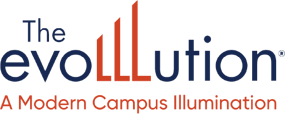Published on
Defining Academic Quality

Higher education has seen so many challenges in the last several years. One that keeps me up at night is the question of the value of a degree or university in general. It pains me. We all put so much of our hearts and souls into what we do. Why is that value not seen? Can we more fully demonstrate that every student receives the fullness of what we intend during their learning journey? In other words, are we delivering academic quality?
Lessons from Industry: Insights from a Computer Assembly Facility
Some years ago, I had the opportunity to visit a computer assembly facility in Texas. After a two-hour tour, I met with several engineers responsible for the production process. These individuals determined the standards the assembly process must meet, constantly sifting through output data to determine if it achieved quality standards, throughput and other metrics.
I may have asked a thousand questions, but the main ones focused on what they did to set and maintain standards (paraphrased):
- Who sets the metrics that determine success? Their answer: Lead engineers set performance metrics and evaluate them over time to see if they are appropriately calibrated. These metrics are in a sense the functional requirements of the production line. If requirements are not met, they make adjustments as quickly as possible.
- How do you synchronize all the metrics? For example, you have requirements for speed of throughput and error thresholds that cannot be exceeded. These can be contradictory. Their answer: Our leads define upfront how we will meet standards collectively, and each unit walks away with a perfect understanding of how their work contributes to the whole. This approach brings accountability to ensure that each is doing what it must to meet standards.
- It seems like this is all happening in real time. Is that so? Their response: Yes, we’re monitoring in real time, but we get together with all department heads—inventory, production, sales, etc.—two or three times a year and review the data. This process is how we collectively determine what changes or adjustments to make. It gives us a meta-perspective of how customers and the market are changing and how we should adjust accordingly. We can only be that thorough by getting together and looking at what we’re doing with everyone at the table.
That visit and the answers I received have stuck with me ever since, clear as day, because one could, with apologies, apply the same sort of model to what we as educators produce—thinkers, doers, explorers and boundary pushers. We produce fresh young human beings with the intellectual capacity and abilities to do great things.
Defining Academic Quality: A Complex Challenge
But how would we define our output? In other words, what makes what we do quality versus not quality? Do we have established functional requirements that define the capabilities a graduating student has mastered? Has every student who graduates met a specific standard? Have we achieved academic quality?
The term is used often, but what does it mean? I once had an academic leader respond that academic quality is rigor. I couldn’t help but ask, “What is rigor?” Another undefinable answer.
I looked up the definition because I wanted to see what may have been intended in that answer. One specifically for academic rigor defined it as “a certain standard of excellence that professors and administrators expect of their students” (tophat.com). Other dictionaries define rigor using words such as rigid, unbending or inflexible. I don’t think we want to embrace those definitions.
I like that first definition but instantly fixate on the first three words: “a certain standard.” What is that certain standard? Is it defined? Do we all have the same standard in our heads when we are designing not only our courses but our academic programs? Using the word “standard” would imply that we apply it evenly and consistently—and understand it evenly and consistently. Is that the case?
Consider rigor as academic quality. Things fall apart when we realize, across higher education as an industry and as individual institutions, that we may think we have certain standards but that the community can’t always consistently articulate what they are. If it can’t, then we DON’T have a certain standard. And perhaps therein lies part of the value perception problem.
Establishing Common Standards and Evaluating Outcomes
Back to academic quality. It could be argued that academic quality also remains undefined in this case. One institution I had the honor of working with proposes an interesting definition that I paraphrase here:
By academic quality, we mean that every student who graduates has demonstrated specific abilities—abilities we defined upfront. We then evaluated each student at specific points throughout their education to determine if they were on track to mastering those abilities. If we saw students were not, we viewed it as our problem, not the students’, and we took immediate action to figure out where our curricula went wrong or had gaps and fixed it.
A couple of key elements: The end was defined, and certain standards were evaluated intentionally. Common definitions, rubrics and maps across the institution ensured each department and course contributed in purposeful and intentional ways.
As academic institutions, we must define what makes a graduate ready to graduate. We must define what the standard is and how we are going to evaluate it. We then must periodically gather and review how we are doing and, when we are not achieving the goal, make planned changes. We can, as a community, own the culmination of the learning journey and all be accountable for the result.
That, to me, is the real definition of academic quality. A summary:
- The knowledge and abilities a student must have when they graduate are defined.
- The learning journey is intentionally designed to ensure students have acquired the knowledge and abilities their programs promise.
- Data is collected through the learning journey to see if students are achieving as we have determined.
- Programs use that data to adjust the learning journey to achieve the intended result.
That loop—resulting in an ongoing and embedded process—achieves quality. We must admit that no program is perfect unto itself; that we commit ourselves to constant improvement is what moves us ever closer to the intended result.
I introduced this idea to an engineering faculty colleague, and they liked it because it resonates so well with the engineering method. In general, we want our students to be active thinkers, problem solvers, decision makers and critical analysts. These things are complicated because they are abilities, not specific points of knowledge. Abilities that by default are perfected over time and through iteration—not in one course, not in one semester—sometimes by making mistakes but being allowed to learn from them with guidance from a master (a faculty member who knows the standard to achieve). Students are given intentionally scaffolded opportunities to build their abilities—in early classes with relatively straightforward problems but with problems of increasing complexity through the curriculum in an intentional manner.
Integrating Core Abilities Across the Curricula
I consulted a well-known engineering university in the Midwest on program design. Over afternoon libations, the department chair told me quietly that their department had decided to map what they consider to be critical thinking across their curricula, including general education and all graduation requirements. By their count, critical thinking was introduced in at least 15 different courses but never intentionally ratcheted up to higher levels of complexity. It appeared that critical thinking was (re)introduced in different ways in many of these 15 times, without a common definition or standard to evaluate achievement. Finally, it didn’t appear that there was a measurement at the end of the program to determine if critical thinking had been achieved. Was it?
I am happy to report that that institution now has community-wide definitions of the core abilities they want students to graduate with, and they’ve carefully mapped how different curricula elements feed into that achievement. They realized that the many conversations over the years about students not being able to write or critically think may be a problem with the curricula, not always with the students. You can imagine the vigorous discussion and debate required to arrive at definitions, but this was a case where the journey was just as important as the result.
Addressing Concerns About Academic Freedom
When I told a colleague from another institution that story, they replied, “That’s a violation of academic freedom!” I asked them to define “academic freedom.” The definition they gave was loose. The faculty member was in finance, so I asked, “Can you teach a student to think critically in finance?” “Of course,” they replied. I responded, “If you were teaching the Black-Scholes valuation method or using Monte Carlo simulation, could you teach critical thinking?” “Of course,” they replied. I asked, “So, you could teach pretty much anything you wanted—any valuation method you wanted—and still teach students to think critically, right?”
Therein lies the answer to that question: Helping students build their ability to problem solve, communicate, critically analyze or make decisions can be done with any content or context, using any number of examples, models, case studies, methodologies or techniques. So, is defining academic quality and how it is achieved across curricula a violation of academic freedom? I posit no.
Professional Responsibility and Ethical Duty
It could be argued that, as educational professionals charged with educating students, it is our responsibility to define learning and make sure it is happening. Our professional responsibility as the owners of curricula and the learning journey is to ensure the learning journey starts and ends where we intend it to, with students possessing the capabilities and knowledge we’ve determined are essential to achieving an education from our institution. Stated in the converse: Are we failing in our duty if we don’t do the above?
When I mentioned all these ideas to a colleague in California, they responded, “Yeah, this was all important…for accreditation.” For accreditation? That would imply it’s just something we should do as a checklist activity, checking it off and wiping it from our minds. I argue the opposite: It is our duty and responsibility as education professionals, and it could be suggested that it is our ethical duty.
That’s how I define academic quality. Thoughts?



